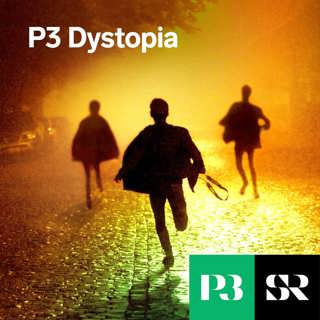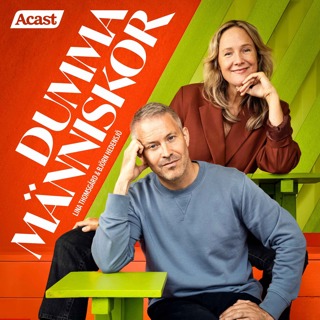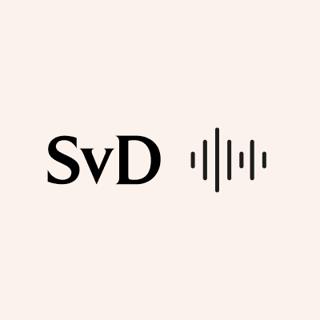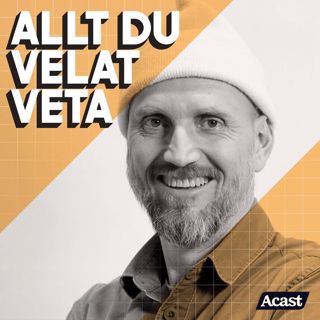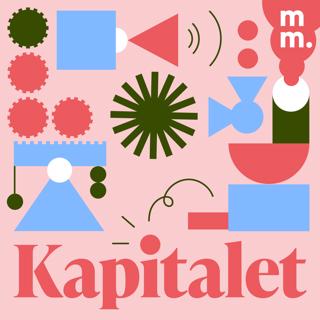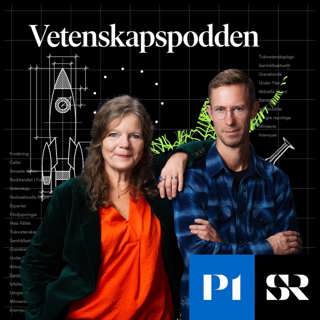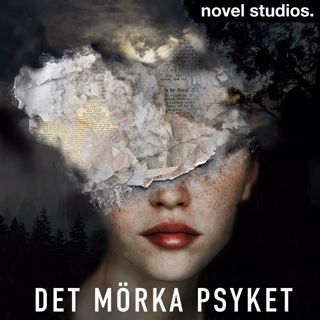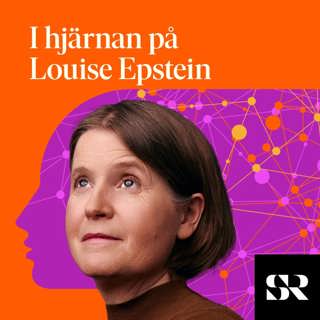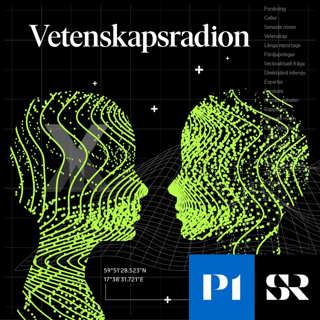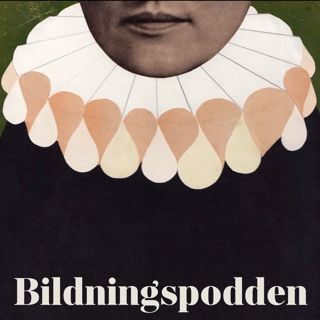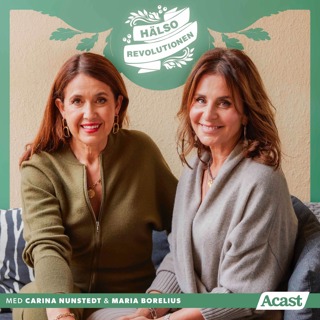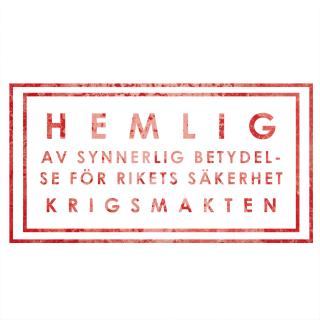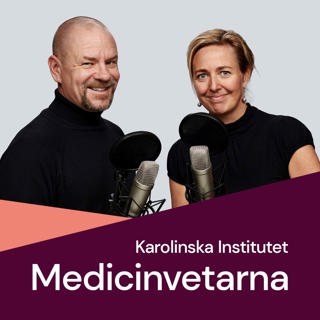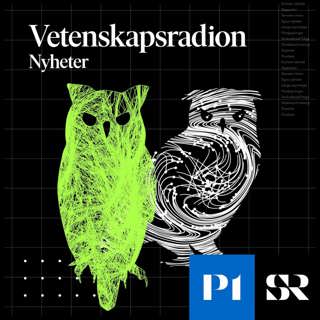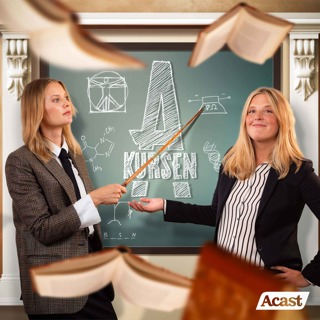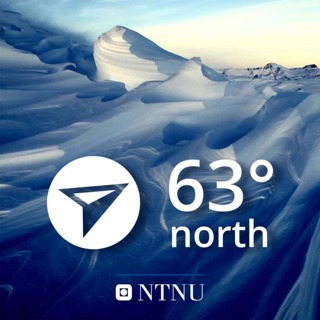
The Detectives: Hunting toxic chemicals in the Arctic
Baby grey seals. Polar bears. Zooplankton on painkillers. How do toxic chemicals and substances end up in Arctic animals — and as it happens, native people, too? Our guests on today's show are Bjørn Munro Jenssen, an ecotoxicologist at NTNU, Jon Øyvind Odland, a professor of global health at NTNU and a professor of international health at UiT —The Arctic University of Norway, and Ida Beathe Øverjordet, a researcher at SINTEF.One of the most useful websites on arctic pollution is the Arctic Monitoring and Assessment Programme, AMAP. Rachel Carson's book is Silent Spring.Here's a selection of articles from today's episode:Sørmo, E.G., Salmer, M.P., Jenssen, B.M., Hop, H., Bæk, K., Kovacs, K.M., Lydersen, C., Falk-Petersen, S., Gabrielsen, G.W., Lie, E. and Skaare, J.U. (2006), Biomagnification of polybrominated diphenyl ether and hexabromocyclododecane flame retardants in the polar bear food chain in Svalbard, Norway. Environmental Toxicology and Chemistry, 25: 2502-2511. https://doi.org/10.1897/05-591RBourgeon, Sophie; Riemer, Astrid Kolind; Tartu, Sabrina; Aars, Jon; Polder, Anuschka; Jenssen, Bjørn Munro; Routti, Heli Anna Irmeli. (2017) Potentiation of ecological factors on the disruption of thyroid hormones by organo-halogenated contaminants in female polar bears (Ursus maritimus) from the Barents Sea. Environmental Research. vol. 15Nuijten, RJM; Hendriks, AJ; Jenssen, Bjørn Munro; Schipper, AM. (2016) Circumpolar contaminant concentrations in polar bears (Ursus maritimus) and potential population-level effects. Environmental Research. vol. 151.Chashchin, Valery; Kovshov, Aleksandr A.; Thomassen, Yngvar; Sorokina, Tatiana; Gorbanev, Sergey A.; Morgunov, Boris; Gudkov, Andrey B.; Chashchin, Maxim; Sturlis, Natalia V.; Trofimova, Anna; Odland, Jon Øyvind; Nieboer, Evert. (2020) Health risk modifiers of exposure to persistent pollutants among indigenous peoples of Chukotka. International Journal of Environmental Research and Public Health (IJERPH). vol. 17 (1). Hosted on Acast. See acast.com/privacy for more information.
30 Mars 202223min

Hermann Göring’s Luftwaffe and the $6 billion deal
How the unlikely combination of WWII Germany, a modest English engineer who created a worker’s paradise, an ambitious industrialist prosecuted as a traitor and a hardworking PhD helped build modern Norway, one aluminium ingot at a time.Today's guests are Hans Otto Frøland, Svein Richard Brandtzæg and Randi Holmestad. Frøland is one of the researchers working in the Fate of Nations project, which is based at NTNU and focused on the global history and political economy of natural resources. To see archival photographs related to the episode, check out this companion article in Norwegian SciTech News.You can read more about the history of aluminium in Norway here:From Warfare to Welfare: Business-Government Relations in the Aluminium Industry (2012) Frøland, Hans Otto; Ingulstad, MatsAkademika ForlagFrøland, Hans Otto; Kobberrød, Jan Thomas. (2009) The Norwegian Contribution to Göring's Megalomania. Norway's Aluminium Industry during World War II. Cahiers d'histoire de l'aluminium. vol. 42-43.Frøland, Hans Otto. (2007) The Norwegian Aluminium Expansion Program in the Context of European integration, 1955-1975. Cahiers d'histoire de l'aluminium.Gendron, Robin S.; Ingulstad, Mats; Storli, Espen. (2013) Aluminum Ore: The Political Economy of the Global Bauxite Industry. University of British Columbia Press. 2013. ISBN 978-0-7748-2533-7. Hosted on Acast. See acast.com/privacy for more information.
16 Mars 202228min

Pirates, noblewomen and bicycling housewives
Why does Norway always rank among the top countries on the planet when it comes to gender equality? It didn't happen by accident. Instead, it took powerful medieval noblewomen, 19th century farmers’ wives, an early 20th century activist on a bicycle, and the feminists who emerged from the postwar baby boom. And yes, there is one Viking woman — but she’s not quite what you might think.Our guests on today's show are Randi Bjørshol Wærdahl, Kari Melby and Marie-Laure Olivier.You can read more about Gunnhild the Viking woman on this Wikipedia page about her.There's also a comprehensive entry about Fredrikke Marie Qvam on Wikipedia.Read more:Wærdahl, Randi Bjørshol.2019: "Manndtz Nature vdj hindis hiertte" - Kvinner i krig og konflikt i nordisk senmiddelalder (Women in war and conflict in the Nordic late Middle Ages (in Norwegian). Collegium Medievale 2019 (2) s. 95-111Kari Melby, Anna-Birte Ravn, Christina Carlsson Wetterberg (eds.), Gender equality and welfare politics in Scandinavia. The limits of political ambition? The Policy Press, Bristol, 2008 Melby, Kari. (2006) Niels Finn Christiansen, Klaus Petersen, Nils Edling & Per Haave (eds.): The Nordic Model of Welfare - a Historical Reappraisal. Historisk Tidsskrift (Norge). vol. 85 (4). Hosted on Acast. See acast.com/privacy for more information.
2 Mars 202232min

Old bones and modern germs
Trondheim, Norway’s first religious and national capital, has a rich history that has been revealed over decades of archaeological excavations. One question archaeologists are working on right now has a lot of relevance in during a pandemic: Can insight into the health conditions of the past shed light on pandemics in our own time? Now, with the help of old bones, latrine wastes and dental plaque, researchers are learning about how diseases evolved in medieval populations, and what society did to stem them — and how that might help us in the future.Our guests for this episode were Axel Christophersen, a professor of historical archaeology at the NTNU University Museum; Tom Gilbert, a professor at the NTNU University Museum and head of the Center for Evolutionarly Hologenomics based at the University of Copenhagen; and Elisabeth Forrestad Swensen, a PhD candidate at the NTNU University Museum. You can read more about the MedHeal research project on the project’s home page.Here are some of the academic articles on medieval Trondheim related to the podcast: Zhou Z, Lundstrøm I, Tran-Dien A, Duchêne S, Alikhan NF, Sergeant MJ, Langridge G, Fotakis AK, Nair S, Stenøien HK, Hamre SS, Casjens S, Christophersen A, Quince C, Thomson NR, Weill FX, Ho SYW, Gilbert MTP, Achtman M. Pan-genome Analysis of Ancient and Modern Salmonella enterica Demonstrates Genomic Stability of the Invasive Para C Lineage for Millennia. Curr Biol. 2018 Aug 6;28(15):2420-2428. Stian Suppersberger Hamre, Valérie Daux- Stable oxygen isotope evidence for mobility in medieval and post-medieval Trondheim, Norway,Journal of Archaeological Science: Reports, Vol. 8, 2016, pp 416-425, A transcript of the show is available here. Hosted on Acast. See acast.com/privacy for more information.
16 Feb 202225min

Darwin had Galapagos finches. Norway has… house sparrows?
The different species of Galapagos finches, with their specially evolved beaks that allow them to eat specific foods, helped Charles Darwin understand that organisms can evolve over time to better survive in their environment. Now, nearly 200 years later and thousands of miles away, biologists are learning some surprising lessons about evolution from northern Norwegian populations of the humble house sparrow (Passer domesticus).Darwin’s finches evolved on the exotic, volcanic Galapagos Islands. NTNU’s house sparrows are dispersed over a group of 18 islands in Helgeland, in an archipelago that straddles the Arctic Circle.Every summer since 1993, when NTNU Professor Bernt-Erik Sæther initiated the House Sparrow Project, a group of biologists has travelled to the islands collect data on the sparrows. They capture baby birds, measure different parts of their bodies, take a tiny blood sample, and then put a unique combination of coloured rings on their legs that help researchers identify the birds throughout their lifetime.Those decades of research have given researchers information that can be helpful in managing threatened and endangered species. They have also done some experiments where they made evolution happen in real time — and then watched what happened when they let nature run its course.And then there was the series of experiments where they learned more than you might want to know about sparrow dating preferences, and about rogue sparrow fathers who court exhausted sparrow mothers — and then fathered children with the cute little she-bird next door. Our guests for today’s show were Henrik Jensen, Thor Harald Ringsby and Stefanie Muff. You can find a transcript of the show here. Selected academic and popular science articles: From NTNU’s online research magazine, Norwegian SciTech News:Why aren’t house sparrows as big as geese?Inbreeding detrimental for survivalWhy house sparrows lay big and small eggs On DarwinDarwin, Charles (1859) On the Origin of Species by Means of Natural Selection, Or, the Preservation of Favoured Races in the Struggle for Life. London: J. Murray. Weiner, J. (2014). The beak of the finch: A story of evolution in our time. Random House.Sulloway, F. J. (1982). Darwin and his finches: The evolution of a legend. Journal of the History of Biology, 15, 1-53. Sulloway, F. J. (1982). Darwin's conversion: the Beagle voyage and its aftermath. Journal of the History of Biology, 15, 325-396. Academic articles from the House Sparrow Project:Araya-Ajoy, Yimen; Ranke, Peter Sjolte; Kvalnes, Thomas; Rønning, Bernt; Holand, Håkon; Myhre, Ane Marlene; Pärn, Henrik; Jensen, Henrik; Ringsby, Thor Harald; Sæther, Bernt-Erik; Wright, Jonathan. (2019) Characterizing morphological (co)variation using structural equation models: Body size, allometric relationships and evolvability in a house sparrow metapopulation. Evolution. vol. 73 (3).Kvalnes, Thomas; Ringsby, Thor Harald; Jensen, Henrik; Hagen, Ingerid Julie; Rønning, Bernt; Pärn, Henrik; Holand, Håkon; Engen, Steinar; Sæther, Bernt-Erik. (2017) Reversal of response to artificial selection on body size in a wild passerine bird. Evolution. vol. 71 (8).Ringsby, Thor Harald; Jensen, Henrik; Pärn, Henrik; Kvalnes, Thomas; Boner, Winnie; Gillespie, Robert; Holand, Håkon; Hagen, Ingerid Julie; Rønning, Bernt; Sæther, Bernt-Erik; Monaghan, Pat. (2015) On being the right size: Increased body size is associated with reduced telomere length under natural conditions. Proceedings of the Royal Society of London. Biological Sciences. vol. 282 (1820).Ranke, Peter Sjolte; Skjelseth, Sigrun; Pärn, Henrik; Herfindal, Ivar; Borg Pedersen, Åsa Alexandra; Stokke, Bård Gunnar; Kvalnes, Thomas; Ringsby, Thor Harald; Sæther, Bernt-Erik; Jensen, Henrik. (2017) Demographic influences of translocated individuals on a resident population of house sparrows. Oikos. vol. 126 (10).Jensen, Henrik; Steinsland, Ingelin; Ringsby, Thor Harald; Sæther, Bernt-Erik. (2006) Indirect selection as a constraint on the evolution of sexual ornaments and other morphological traits in the House Sparrow. Journal of Ornithology = Journal fur Ornithologie. vol. 147.Jensen, Henrik; Svorkmo-Lundberg, Torkild; Ringsby, Thor Harald; Sæther, Bernt-Erik. (2006) Environmental influence and cohort effects in a sexual ornament in the house sparrow, Passer domesticus. Oikos. vol. 114.Ringsby, Thor Harald; Sæther, Bernt-Erik; Jensen, Henrik; Engen, Steinar. (2006) Demographic characteristics of extinction in a small, insular population of house sparrows in Northern Norway. Conservation Biology. vol. 20.Skjelseth, Sigrun; Ringsby, Thor Harald; Jensen, Henrik; Tufto, Jarle; Sæther, Bernt-Erik. (2006) Dispersal patterns within a meta-population of House Sparrows after an introduction experiment. Journal of Ornithology = Journal fur Ornithologie. vol. 147.Hoset, Katrine S.; Espmark, Yngve; Fossøy, Frode; Stokke, Bård Gunnar; Jensen, Henrik; Wedege, Morten I; Moksnes, Arne. (2014) Extra-pair paternity in relation to regional and local climate in an Arctic-breeding passerine. Polar Biology. vol. 37 (1).Ranke, Peter Sjolte; Skjelseth, Sigrun; Pärn, Henrik; Herfindal, Ivar; Borg Pedersen, Åsa Alexandra; Stokke, Bård Gunnar; Kvalnes, Thomas; Ringsby, Thor Harald; Sæther, Bernt-Erik; Jensen, Henrik. (2017) Demographic influences of translocated individuals on a resident population of house sparrows. Oikos. vol. 126 (10).Hagen, Ingerid Julie; Lien, Sigbjørn; Billing, Anna Maria; Elgvin, Tore Oldeide; Trier, Cassandra Nicole; Niskanen, Alina Katariina; Tarka, Maja; Slate, Jon; Sætre, Glenn-Peter; Jensen, Henrik. (2020) A genome-wide linkage map for the house sparrow (Passer domesticus) provides insights into the evolutionary history of the avian genome. Molecular Ecology Resources. vol. 20 (2).Holand, Håkon; Jensen, Henrik; Kvalnes, Thomas; Tufto, Jarle; Pärn, Henrik; Sæther, Bernt-Erik; Ringsby, Thor Harald. (2019) Parasite prevalence increases with temperature in an avian metapopulation in northern Norway. Parasitology. vol. 146 (8).Kvalnes, Thomas; Røberg, Anja Ås; Jensen, Henrik; Holand, Håkon; Pärn, Henrik; Sæther, Bernt-Erik; Ringsby, Thor Harald. (2018) Offspring fitness and the optimal propagule size in a fluctuating environment. Journal of Avian Biology. vol. 49 (7).Lundregan, Sarah; Hagen, Ingerid Julie; Gohli, Jostein; Niskanen, Alina Katariina; Kemppainen, Petri; Ringsby, Thor Harald; Kvalnes, Thomas; Pärn, Henrik; Rønning, Bernt; Holand, Håkon; Ranke, Peter Sjolte; Båtnes, Anna Solvang; Selvik, Linn-Karina M.; Lien, Sigbjørn; Sæther, Bernt-Erik; Husby, Arild; Jensen, Henrik. (2018) Inferences of genetic architecture of bill morphology in house sparrow using a high-density SNP array point to a polygenic basis. Molecular Ecology. vol. 27 (17).Silva, Catarina; McFarlane, S. Eryn; Hagen, Ingerid Julie; Rönnegård, Lars; Billing, Anna Maria; Kvalnes, Thomas; Kemppainen, Petri; Rønning, Bernt; Ringsby, Thor Harald; Sæther, Bernt-Erik; Qvarnström, Anna; Ellegren, Hans; Jensen, Henrik; Husby, Arild. (2017) Insights into the genetic architecture of morphological and sexually selected traits in two passerine bird species. Heredity. vol. 119 (3).Stubberud, Marlene Wæge; Myhre, Ane Marlene; Holand, Håkon; Kvalnes, Thomas; Ringsby, Thor Harald; Sæther, Bernt-Erik; Jensen, Henrik. (2017) Sensitivity analysis of effective population size to demographic parameters in house sparrow populations. Molecular Ecology. vol. 26 (9).Holand, Håkon; Kvalnes, Thomas; Gamelon, Marlène; Tufto, Jarle; Jensen, Henrik; Pärn, Henrik; Ringsby, Thor Harald; Sæther, Bernt-Erik. (2016) Spatial variation in senescence rates in a bird metapopulation. Oecologia. vol. 181 (3).Rønning, Bernt; Broggi, Juli; Bech, Claus; Moe, Børge; Ringsby, Thor Harald; Pärn, Henrik; Hagen, Ingerid Julie; Sæther, Bernt-Erik; Jensen, Henrik; Grindstaff, Jennifer. (2016) Is basal metabolic rate associated with recruit production and survival in free-living house sparrows?. Functional Ecology. vol. 30 (7).Holand, Håkon; Jensen, Henrik; Tufto, Jarle; Pärn, Henrik; Sæther, Bernt-Erik; Ringsby, Thor Harald. (2015) Endoparasite infection has both short- and long-term negative effects on reproductive success of female house sparrows, as revealed by faecal parasitic egg counts. PLOS ONE. vol. 10 (5).Ringsby, Thor Harald; Jensen, Henrik; Pärn, Henrik; Kvalnes, Thomas; Boner, Winnie; Gillespie, Robert; Holand, Håkon; Hagen, Ingerid Julie; Rønning, Bernt; Sæther, Bernt-Erik; Monaghan, Pat. (2015) On being the right size: Increased body size is associated with reduced telomere length under natural conditions. Proceedings of the Royal Society of London. Biological Sciences. vol. 282 (1820). Hosted on Acast. See acast.com/privacy for more information.
26 Feb 202125min

Not enough COVID-19 tests? No problem, we'll make them!
Not enough COVID-19 tests? No problem, we’ll make some! When the coronavirus first transformed from a weird respiratory disease centered in Wuhan, China to a global pandemic, no one was really prepared. Worldwide, no one had enough masks, personal protective gear and definitely — not enough tests. The problem was especially acute in places like Norway, a small country that had to compete on a global market to get anything and everything. What happened when a molecular biologist, some engineers and a couple of PhDs and postdocs put their heads together to design a completely different kind of coronavirus test — and how it changed lives in India, Denmark and Nepal. This last country was given coronavirus tests as NTNU’s annual Christmas gift, in coordination with a volunteer organization called NepalimedNorway. Our guests on today’s show are Magnar Bjørås, Sulalit Bandyopadhyay, Vegar Ottesen, Anuvansh Sharma and Tonje Steigedal.There's a transcript for today's show here. You can read more in detail about the tests here: https://www.ntnu.edu/ntnu-covid-19-test And here is a list of articles from NTNU and SINTEF’s online research magazine, Norwegian SciTech News: NTNU’s new COVID-19 test to be used in India and DenmarkNTNU establishes a factory to produce coronavirus testsFrom thousands of tiny balls to 150,000 tests per week This episode was written, recorded, edited and produced by Nancy Bazilchuk. Sound design and editorial assistance from Randi Lillealtern at Historiebruket. Hosted on Acast. See acast.com/privacy for more information.
19 Feb 202121min

The Longship that could help save the planet
Everyone knows there’s just too much carbon dioxide in the atmosphere — and we’re heating up the planet at an unprecedented pace. More than 20 years ago, Norwegians helped pioneer an approach to dealing with CO2 that’s still ongoing today— they captured it and pumped it into a rock formation deep under the sea. Now the Norwegian government is building on those decades of experience with a large-scale carbon capture and storage project called Longship. Will it work? Is it safe? And is it something that other countries can benefit from, too? Our guests for this episode were Olav Bolland, Philip Ringrose and Mona Mølnvik. You can find the transcript of the episode here.More resources/reading: Olav Bolland’s book: Nord, Lars O.; Bolland, Olav. (2020) Carbon Dioxide Emission Management in Power Generation. Wiley-VCH Verlagsgesellschaft. 2020. ISBN 978-3-527-34753-7. You can read the White Paper from the Norwegian government about the Longship project here. Here’s a press release from 15 December 2020 that reports on the Norwegian Storting’s funding approval for the Longship project. This link takes you to a transcript, in English, from the press conference from 21 September 2020 in which Norwegian officials announce the Longship plan. Here’s the official website for the Longship CCS project. You can read about the Norwegian CCS Research Centre that Mona Mølnvik is head of here. An older, but still good video about Sleipner https://www.youtube.com/watch?v=KG5_WSXj1pI&t=271s Philip Ringrose’s group’s most recent video https://www.youtube.com/watch?v=pAAb1S4bqks&t=28s A e-lecture by Philip Ringrose about CCS https://www.youtube.com/watch?v=eozVdrvejDs&t=400s Selected popular science and scientific articles If the world can capture carbon, there’s capacity to store it. Norwegian SciTech News, 13 December 2019 The world doesn’t realise how much we need CO2 storage. Norwegian SciTech News, 5 December 2016 Carbon capture and storage essential to reach climate target. Norwegian SciTech News, 7 April 2014https://www.bloomberg.com/news/articles/2013-09-20/norway-drops-moon-landing-as-mongstad-carbon-capture-scrapped Ringrose, Philip; Meckel, T A. (2019) Maturing global CO2 storage resources on offshore continental margins to achieve 2DS emissions reductions. Scientific Reports. 9 (1). Grethe Tangen, Erik G.B. Lindeberg, Arvid Nøttvedt, Svein Eggen. (2014) Large-scale Storage of CO2 on the Norwegian Shelf Enabling CCS Readiness in Europe, Energy Procedia, vol. 51, pp.326-333 Mai Bui, Claire S. Adjiman, Andre Bardow et al. (2018) Carbon Capture and Storage (CCS): the way forward. Energy Environ. Sci . 11, 1062 From the summary for policymakers, IPCC Special Report on Global Warming of 1.5C (2018): “All pathways that limit global warming to 1.5°C with limited or no overshoot project the use of carbon dioxide removal (CDR) on the order of 100–1000 GtCO2 over the 21st century. CDR would be used to compensate for residual emissions and, in most cases, achieve net negative emissions to return global warming to 1.5°C following a peak (high confidence). CDR deployment of several hundreds of GtCO2 is subject to multiple feasibility and sustainability constraints (high confidence). Significant near-term emissions reductions and measures to lower energy and land demand can limit CDR deployment to a few hundred GtCO2 without reliance on bioenergy with carbon capture and storage (BECCS) (high confidence).” Hosted on Acast. See acast.com/privacy for more information.
11 Feb 202129min

Viking raiders stole this box. But the real surprise is what they did with it!
It’s no bigger than four decks of cards stacked one on top of the other — a tiny box raided from an Irish church. In Ireland, the box held the holy remains of a saint. What a mound of sand, some leftover nails and the box itself tell us about the Viking raiders who stole it — and what they did with it when they brought it back to Norway. Our guests for this episode were Aina Heen-Pettersen, a PhD candidate at NTNU, and Griffin Murray, who is a lecturer in the Department of Archaeology at University College Cork. The reliquary itself is at NTNU’s University Museum in Trondheim. You can see it virtually if you register to view the museum’s Online Collections and search for “shrine”. A transcript of today’s show is available here.Here are some of the academic articles on the reliquary research: Heen-Pettersen, A. (2019). The Earliest Wave of Viking Activity? The Norwegian Evidence Revisited. European Journal of Archaeology, 22(4), 523-541. doi:10.1017/eaa.2019.19 Pettersen, Aina Margrethe Heen. (2018) Objects from a distant place: transformation and use of Insular mounts from Viking-Age burials in Trøndelag, Central Norway. Anglo-Saxon Studies in Archaeology and History. vol. 21.Pettersen, Aina Margrethe Heen; Murray, Griffin. (2018) An Insular Reliquary from Melhus: The Significance of Insular Ecclesiastical Material in Early Viking- Age Norway. Medieval Archaeology. vol. 62 (1).Pettersen, Aina Margrethe Heen. (2014) Insular artefacts from Viking-Age burials from mid-Norway. A review of contact between Trøndelag and Britain and Ireland. Internet Archaeology. vol. 38.And here are the books that are mentioned in the podcast:Brunning, S. (2019). The Sword in Early Medieval Northern Europe: Experience, Identity, Representation. Boydell & Brewer. doi:10.1017/9781787444560 Etting, V. (2013) The Story of the Drinking Horn: Drinking Culture in Scandinavia During the Middle AgesVolume 21 of Publications from the National Museum / Studies in archaeology & history: Publications from the National Museum, ISSN 0909-9506 Lowenthal, D. (2015). The Past is a Foreign Country — Revisited. Cambridge University Press. doi:10.1017/CBO9781139024884A transcript of today’s show is available here. Hosted on Acast. See acast.com/privacy for more information.
4 Feb 202122min


